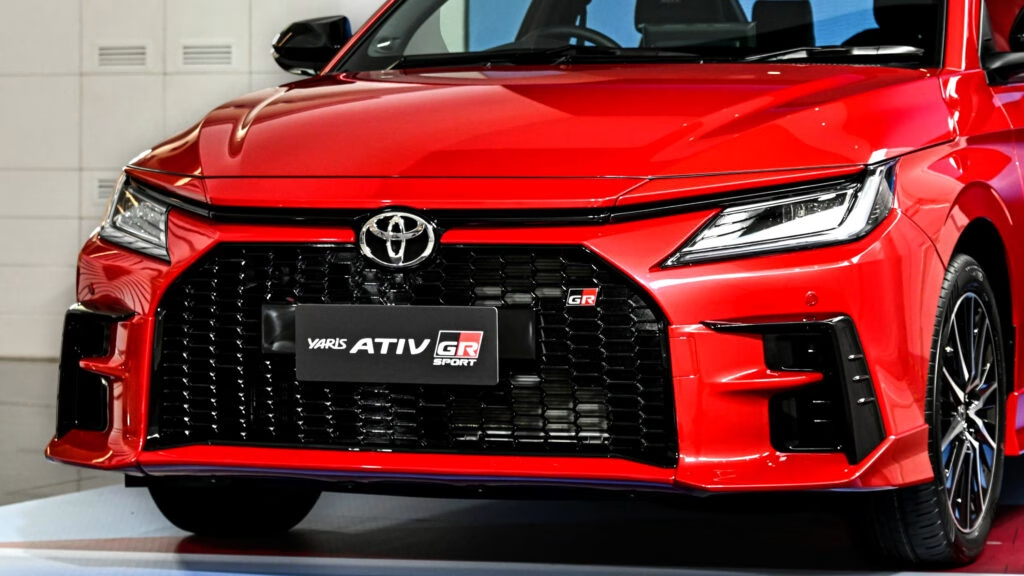What’s New With the Toyota Yaris Ativ? Is the Hybrid and GR Sport Trim Worth Your Attention?
Toyota’s Yaris Ativ, sometimes called the Vios in other regions, has always been a practical subcompact sedan. But with the latest update, Toyota’s thrown in a curveball: a hybrid powertrain and a GR Sport trim. So, what does this actually mean for drivers who want more than just a commuter car?
How Does the New Hybrid Powertrain Perform in Real Life?
Let’s get straight to the numbers. The new hybrid system pairs a 1.5-liter four-cylinder engine with an electric motor, delivering a combined 110 horsepower. That might not sound like hot-hatch territory, but here’s the kicker: Toyota claims up to 69 miles per gallon (29.4 km/l). For context, that’s better than most rivals in this class and even edges out some compact hybrids.
But it’s not just about sipping fuel. The hybrid system borrows tech from the Yaris Cross and regular Yaris, both of which have earned praise for their smooth, seamless transitions between gas and electric power. In daily driving, this means you’ll notice quieter starts, less vibration at low speeds, and a general sense of refinement you don’t always get in budget sedans. Plus, with selectable Eco, Normal, and Power modes, you can tailor the driving feel to your mood or the traffic ahead.
What Sets the GR Sport Trim Apart From Regular Models?
If you’re picturing a Yaris Ativ with just a few badges slapped on, think again. The GR Sport treatment is more than skin deep. Sure, there’s the aggressive bodykit—bigger front intakes, side skirts, a rear diffuser, and a subtle black spoiler. The 17-inch alloys and black roof/mirror caps give it a genuinely sporty vibe, especially in the available Platinum White Pearl, Red Mica Metallic, or Attitude Black Mica.
Inside, the GR Sport keeps things sharp with black synthetic leather, gray stitching, and GR logos on the steering wheel and headrests. It’s not just about looks, either. The suspension and steering have been retuned for a more responsive feel, and front/rear stabilizer bars help keep things flat in corners. For a car in this price bracket, that’s a rare treat.
Is the Cabin and Tech Package Competitive for the Price?
Toyota’s not skimping on features here. The GR Sport and Premium trims both get a 10.1-inch infotainment screen, wireless charging, automatic climate control, ambient lighting, and a six-speaker Pioneer audio system. Safety-wise, Toyota Safety Sense comes standard, bringing adaptive cruise control, lane-keeping assist, and automatic emergency braking—features that used to be reserved for pricier models.
The interior quality won’t fool you into thinking you’re in a Lexus, but for the segment, it’s above average. The seats are supportive, and the layout is intuitive. If you’re coming from an older subcompact, the jump in tech and comfort is immediately noticeable.
How Does Pricing Stack Up Against the Competition?
Here’s where things get interesting. In Thailand, the Yaris Ativ HEV starts at 719,000 baht (about $22,200) for the Premium and 769,000 baht ($23,800) for the GR Sport. That’s a premium over the base 1.2-liter petrol version, which starts at 549,000 baht ($17,000), but still undercuts many hybrid competitors. Optional bodykits, like the Charismo Drift and GR accessory packages, let buyers personalize their ride without breaking the bank.
Toyota’s strategy here is clear: offer electrified tech at a price point that appeals to budget-conscious buyers. With Chinese automakers gaining ground in Southeast Asia, Toyota’s move to make hybrids more accessible is both defensive and forward-thinking. According to Nikkei Asia, Toyota still commands 38% of the Thai market, but that share is shrinking as new players enter the field. The Yaris Ativ HEV is a direct response to that challenge.
Will the Hybrid Yaris Ativ Be Available Outside Thailand?
Absolutely. Toyota plans to export the hybrid Yaris Ativ to 23 markets, mainly across Southeast Asia. Given the growing demand for affordable hybrids in developing markets, don’t be surprised if you see this model popping up in other regions soon. It’s built in Thailand, which has become a hub for small car production, so logistics are on Toyota’s side.
Who Should Actually Consider the Yaris Ativ Hybrid or GR Sport?
If you’re looking for a city car that won’t punish you at the pump, the hybrid’s 69 mpg rating is a game-changer. Daily commuters, rideshare drivers, and anyone tired of volatile fuel prices will appreciate the savings. The GR Sport trim, meanwhile, is for those who want a little extra flair and sharper handling without sacrificing practicality.
It’s not a performance car, but it’s a huge step up from the vanilla sedans of yesteryear. Think of it as the sweet spot between sensible and spirited—something you’d actually look forward to driving, even if your commute is mostly stop-and-go.
What’s the Real-World Impact of Toyota’s Hybrid Push in Southeast Asia?
This isn’t just about one car. Toyota’s move signals a broader shift: hybrids are no longer reserved for the wealthy or eco-warriors. By making the Yaris Ativ HEV the most affordable hybrid in its Thai lineup, Toyota is betting that mainstream buyers are ready to embrace electrification—especially as fuel prices and emissions regulations tighten.
And with competition heating up, especially from Chinese brands offering EVs and hybrids at aggressive prices, Toyota’s willingness to innovate at the entry level could set the tone for the next decade of car buying in the region.
The big takeaway? The Yaris Ativ Hybrid and GR Sport aren’t about perfection—they’re about smarter adjustments. Start with one change this week, and you’ll likely spot the difference by month’s end. Whether it’s lower fuel bills, a more enjoyable drive, or simply the peace of mind that comes with Toyota reliability, this new Yaris Ativ lineup is proof that small tweaks can add up to something big.

